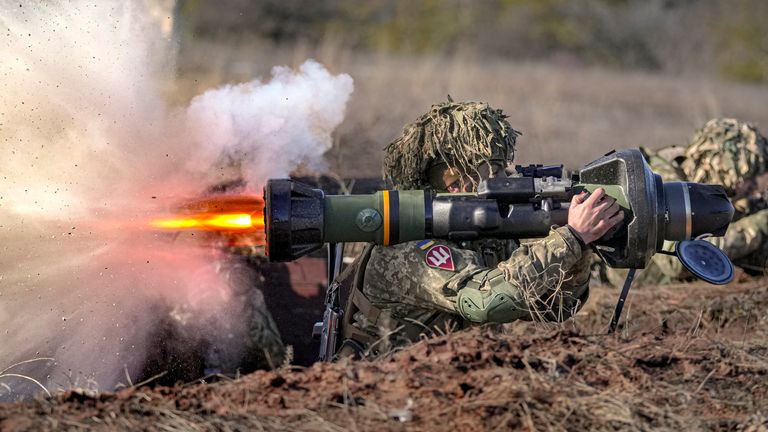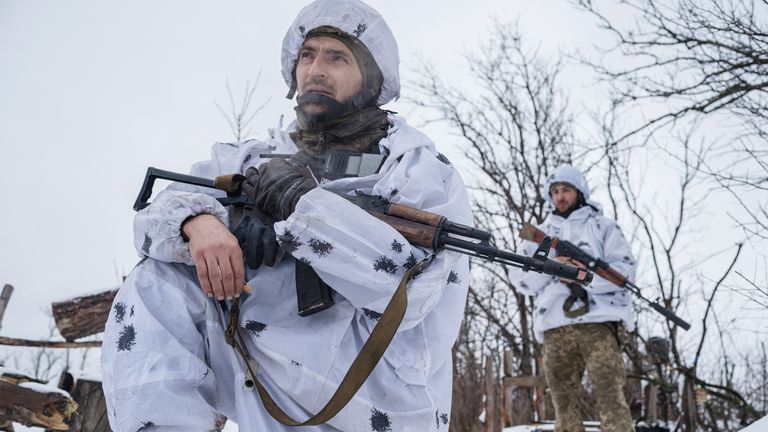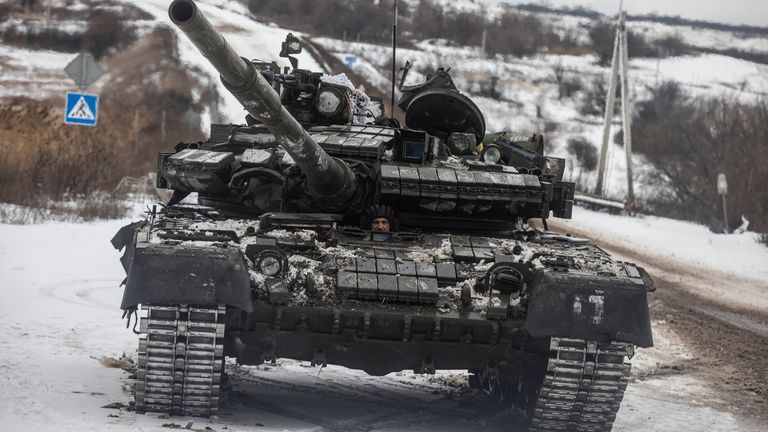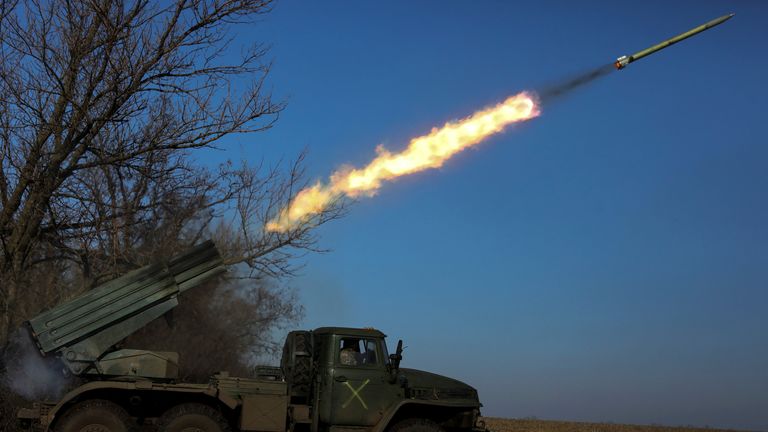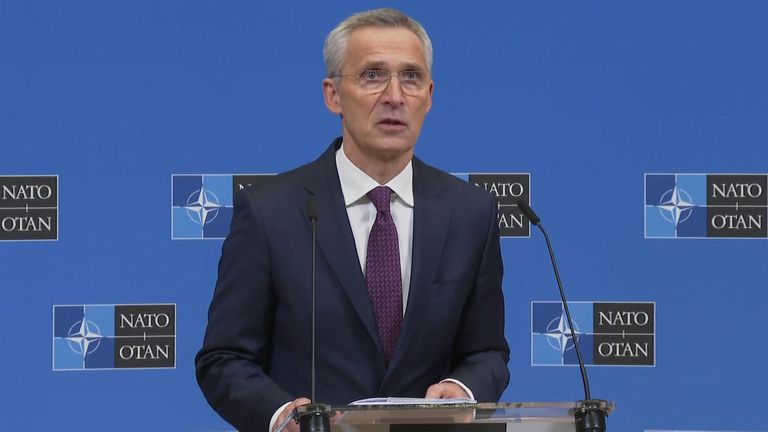After two days of diplomacy and negotiations, NATO’s meeting broke up with lots of ideas, but no deal to send fighter jets to Ukraine.
Despite the smiles and bonhomie of Ukraine’s Defence Minister Oleksii Reznikov, NATO’s resolve didn’t buckle.
The question of supplying planes remains “under discussion”, we are told, but other things took precedence. For one, the more prosaic question of ammunition.
Ukraine war latest: Russia burning bodies ’round the clock’ to hide losses
NATO’s assessment is that Russia is initiating an offensive that will be focused on creating a long, attritional ground war.
Russia’s advantage is that it has a lot of people, a willingness to accept a high casualty rate, and big stockpiles of munitions.
It’s not the sort of war that most nations had predicted, or would choose.
The frontlines of this conflict are now lined with trenches that would not look out of place in the First World War. But NATO, its members and its wider allies are all having to adapt to that reality.
So the alliance has agreed to step up its production of the ammunition that Ukraine will need, even though the likelihood is that Ukraine will use up supplies quicker than they can presently be made.
And no nation will want to send all its ammunition to Ukraine only to leave itself empty-handed.
As US Defence Secretary Lloyd Austin put it: “Even as we rush to support Ukraine, and build up our industrial capacity, we must replenish our own stockpiles.”
None of this will happen overnight
Alongside that, of course, are heavy weapons, including tanks, that have been promised by various nations, including the UK.
Ukrainian soldiers will need training on their use and maintenance, and spares are going to have to be delivered as well.
None of this will happen overnight. For one thing, NATO will need to work on how to deliver all those resources to the right place – sending an army’s worth of equipment into a warzone is no easy job.
And no cheap matter, either.
The cost of sustaining Ukraine’s war runs into many, many billions of pounds for NATO countries, predominantly borne by the United States.
America keen to start conversation on how other NATO members could spend more
And, not for the first time, America is keen to start a conversation about how other NATO members could spend more of their budget.
NATO presently demands that member states spend 2% of their national turnover on defence. Now, the organisation wants that to become a minimum, rather than a target.
“It is obvious that we need to spend more,” said NATO Secretary General Jens Stoltenberg. “We should go from viewing 2% as a ceiling to seeing it as a floor. It should be obvious that 2% is a minimum.”
The topic will be discussed when NATO holds a meeting in July for heads of state.
By then, both Finland and Sweden may have become full members, if Turkey and Hungary have finally been persuaded to drop their objections.
Mr Stoltenberg has made it clear that he thinks both should be members by now, and will fly to Turkey to hold further discussions.
Ukrainian defence minister brandishes fighter jet handkerchief
As for the fighter jets, Ukraine has made it clear that it wants them, as well as more air-defence systems.
President Volodymyr Zelenskyy beat that drum during his whistle-stop tour of Europe, and it was a message repeated by Mr Reznikov when he came to Brussels showing off a handkerchief designed with the blueprint of a fighter jet.
It didn’t matter that the plane in question was actually a Russian Su-30. His message was clear, but so far not heeded.
The problem with supplying jets remains the same – it takes a long time to train pilots to use them and they require burdensome specialist maintenance. And if Russia is launching missiles from its own territory, their use may be limited.
That’s why, for the moment at least, NATO nations prefer to concentrate on shells, ammunition, heavy weapons, training and supply chains.
The ingredients, so they believe, to hold Russia back and enable Ukraine to launch a counter-offensive in the spring.

